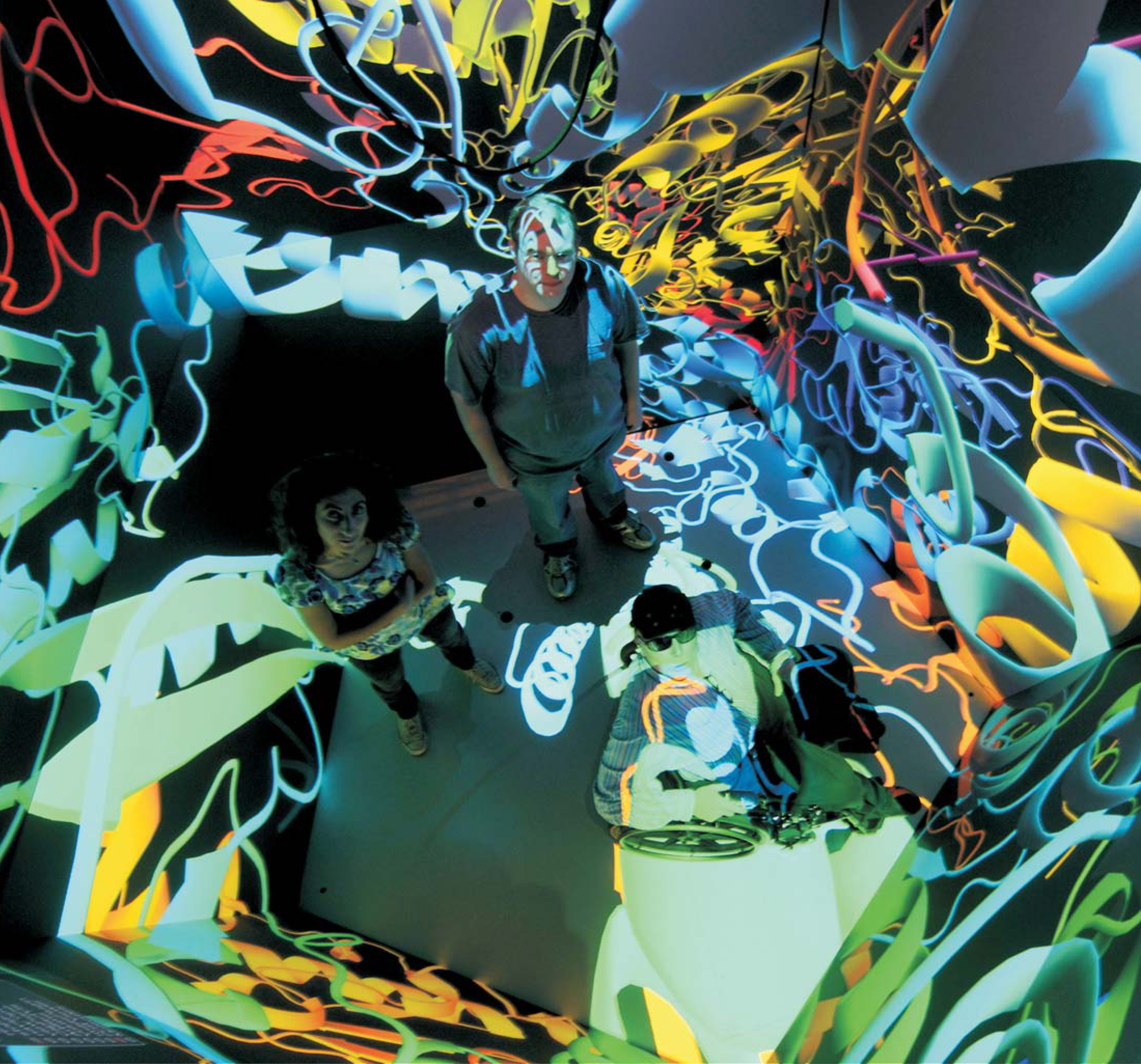A virtual CAVE
DOI: 10.1063/1.3265249
The structure of the protein RNA polymerase II is being projected here on the walls and floor of the five-sided StarCAVE, an interactive virtual-reality (VR) room at the California Institute for Telecommunications and Information Technology (Calit2) at the University of California, San Diego. In StarCAVE, users can immerse themselves in worlds as small as nanoparticles or as large as the cosmos, and they can fly around and zoom in and out through those virtual worlds with a wand whose position is monitored by a multicamera wireless tracking system. Polarized glasses can add a third spatial dimension to the viewing experience.
StarCAVE represents the third generation of surround-VR rooms. Thomas DeFanti, Calit2 director of visualization, and Dan Sandin conceived the first CAVE, a recursive acronym for CAVE Automatic Virtual Environment, in 1991 at the University of Illinois at Chicago’s Electronic Visualization Laboratory, where they are now emeritus professors. This latest design features 68 million pixels—34 million per eye—distributed over 15 wall screens and two floor screens; a 15-speaker surround-sound system complements the visualization. T. DeFanti et al., Future Gen. Comput. Syst. 25 , 169, 2009 http://dx.doi.org/10.1016/j.future.2008.07.015
To submit candidate images for Back Scatter, visit http://www.physicstoday.org/backscatter.html

Image courtesy of Thomas DeFanti, UCSD Calit2.





